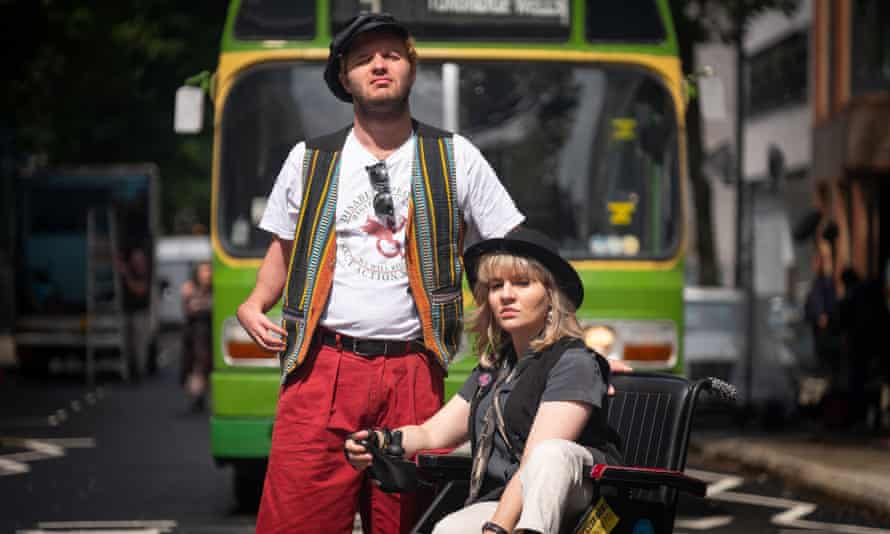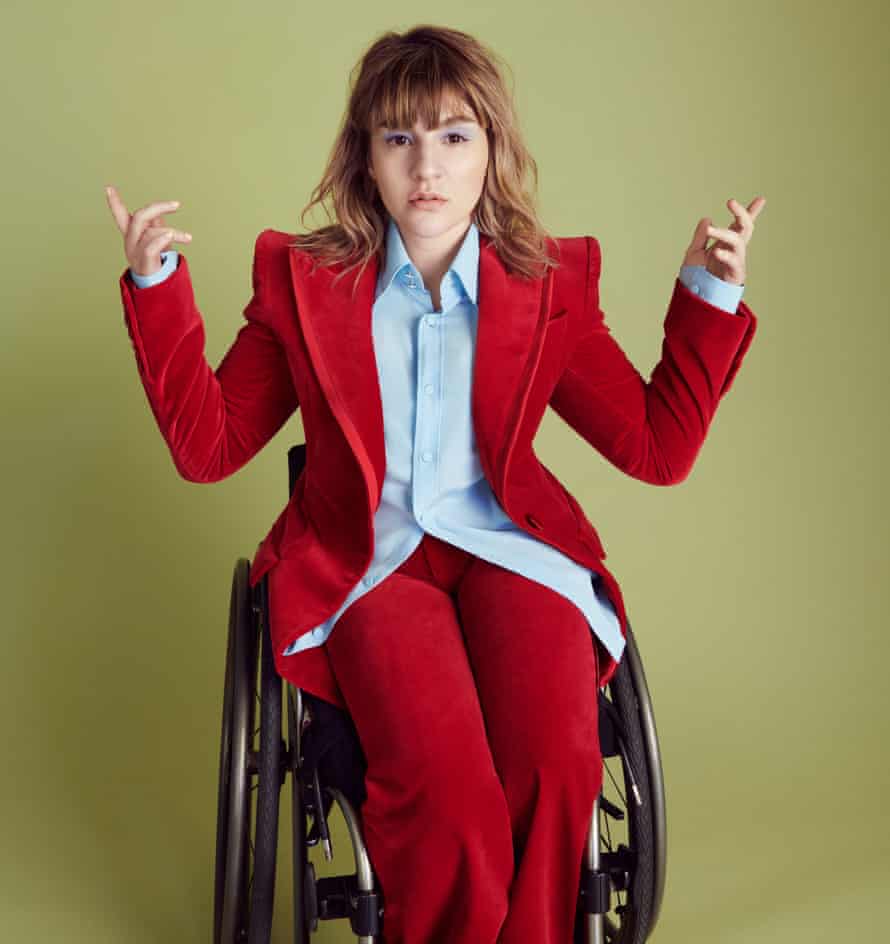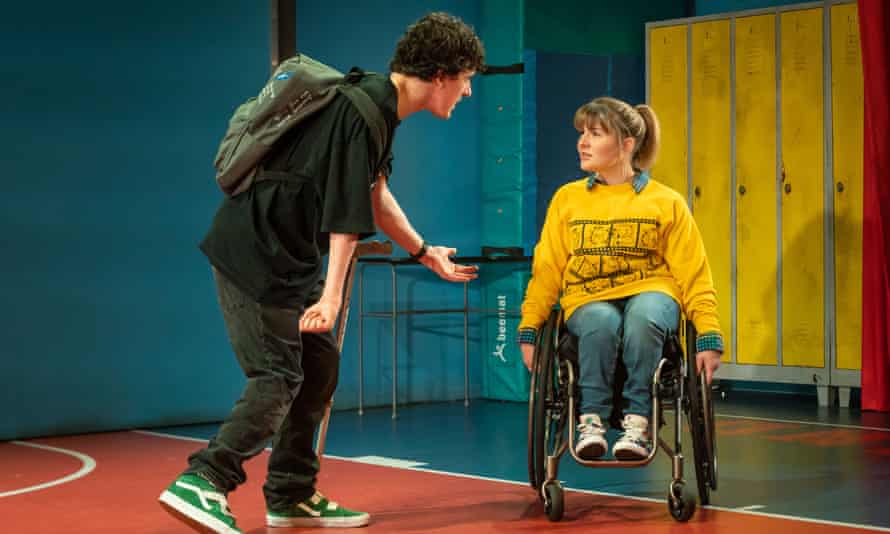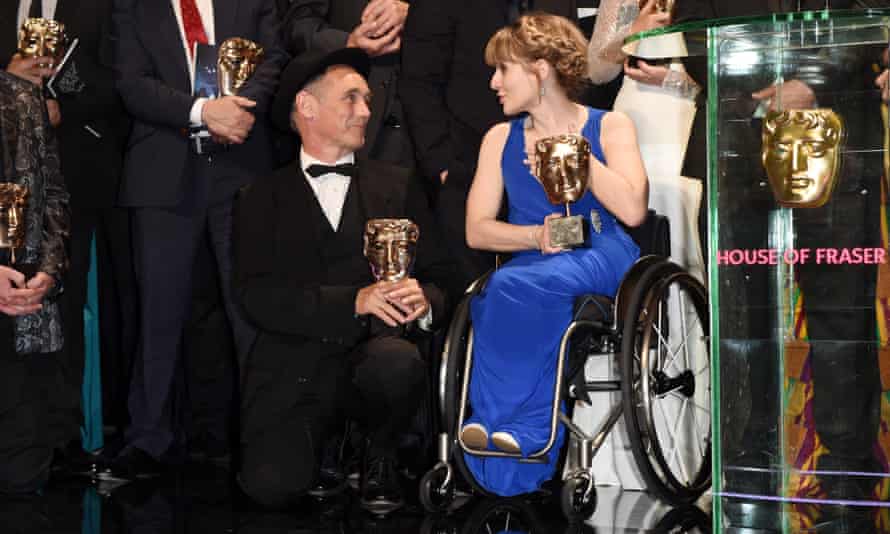
‘These stories change how people think’: actor Ruth Madeley on disability, activism and sex scenes | Television
Ruth Madeley hadn’t intended to cause a commotion in the quiet carriage. She was taking the train to a script read-through on an entirely unremarkable March 2016 morning when, out of the blue, her phone started to ping at an unusual pace. She gave apologetic looks to the commuters tutting at the incessant buzzing. But once she’d looked down at the screen, she stopped caring what other people thought.
“I picked up my phone and read the first Twitter post,” Madeley says. “Bafta nominations for Best Actress: Suranne Jones, Claire Foy, Sheridan Smith… and me. I couldn’t shitting believe it.”
Nine months earlier, Don’t Take My Baby, a drama about two disabled parents fighting to keep their newborn child, had been broadcast on BBC Three. It’s been estimated that thousands of babies are removed from disabled couples annually in the UK; Madeley played one such mother fighting to keep her daughter. There’d been talk on set about the production being something special and, when it first aired, it received an impressive reception. Still, when Madeley saw that notification from Bafta, she was gobsmacked. It was her first leading TV role.
“I pushed the phone away and just sat there breathing deeply,” Madeley remembers. “Holy shit. All these women I watched on TV and thought of as powerhouses. And I was in a category with them? It still feels ridiculous to me.”
Years might have passed, but Madeley still gets a thrill reliving that moment. When she retells the story, sitting in the glam room behind an east London studio, the 34-year-old actor breaks out into an ear-to-ear grin. Madeley was born with spina bifida and uses a wheelchair. When she began acting, she wanted to tell untold stories – to be successful, disabled and visible. To her, the nomination was confirmation she’d been seen. “Doing this has never just been about acting for me, and it never will be,” she says. “I know that with every role I do, there’ll be disabled teenagers at home watching TV. I’d never seen anyone like me, but maybe these ones could.”

We’re meeting now to talk about Then Barbara Met Alan, Madeley’s latest project. In it, she plays Barbara Lisicki, a pioneering disability rights campaigner. It follows Lisicki and her partner Alan Holdsworth (played by Arthur Hughes), who are cabaret performers and activists, in their efforts to see the passing of the 1995 Disability Discrimination Act. It’s set in the early 90s when, far from being equal citizens, disabled people faced huge barriers in the workplace, often lived in poor-quality housing, had little access to accessible transport and few rights enshrined in law.
“It’s a love story first and foremost,” Madeley says. “And it’s not preachy or jumping on a soapbox to talk about disability policy. It’s a badass way for disabled people to talk about how they had to fight for their rights to get that bill through parliament, and the legacy it left.”
Madeley was a child when the protests and riots were unfolding. In early adulthood, she began to learn a little more. “In my 20s, I researched them myself: watching documentaries, deep-diving into recent history.” This project presented an opportunity to celebrate those heroes who sacrificed so much and put their bodies on the line.
Naturally, Madeley says, she’s a glass-half-full kind of person. “Maybe I shouldn’t have been,” she explains, “but I was shocked at how much of what they were demanding we are still fighting for today.”
There are the practical things: so many disabled people still don’t have access to public transport. “But the majority of barriers I face as a disabled person aren’t physical,” Madeley says. “In theory, transport is easy to get fixed if there’s willing, but perceptions of what it means to be disabled are the biggest problem.” You can’t simply install a ramp to change people’s minds.

wears velvet jacket, trousers and cotton shirt, all by gucci.com. Photograph: Gustavo Papaleo
Just last year, a minicab driver refused to drop her outside Euston station’s accessible entrance, stating that heavy traffic made it “too difficult”. He subsequently refused to return her wheelchair. When she reported the incident to the Metropolitan police, Madeley was told it wasn’t a hate crime: “I was shut down and made to feel as though I was making a fuss over nothing.”
It’s why Madeley has no qualms, she explains, with being labelled a “disabled actor”, or us spending time on the topic. She wants these conversations both to be had and heard. “It’s why I feel in such a privileged and powerful position to be in the industry I’m in,” she says, with more than a hint of determination. “If you put disability at the forefront in the media and popular culture, you can change preconceptions of what disability is. That it’s not a death sentence.” For Madeley, it’s more than just being present: “It means telling stories that change how people think.”
As childhoods go, much of Madeley’s was blissfully ordinary. Mum was a nurse, Dad worked in customer services. Home was Bolton, where she still lives today, with her partner of nine years. But hospitals were a constant presence. Having been born with spina bifida – a condition that meant her spinal cord didn’t develop fully in utero – trips to the doctor were part and parcel of daily life.
“We always knew I’d need surgery on my spine,” Madeley explains. Her condition developed into neuromuscular scoliosis. “By the time I hit 11, we’d started talking about a major corrective procedure where metal rods would be put into my back to straighten it.”
It was a lot for a young person to grapple with, but as much as possible Madeley didn’t let it get to her. A year later, the surgeries started. “It was meant to be one operation,” she says, “but it just kept going a bit pear shaped, and it ended up dragging on all the way through secondary school.” In all, Madeley missed a year and a half of in-person education; she completed her GCSE coursework from a hospital bed.

“The recovery process for any spinal surgery is boringly long,” she says. “I’m an incredibly impatient person. That healing kept getting delayed as things went wrong, so I felt I was wasting time.” There were tough periods, but in the end, the procedures were successful. “It wasn’t traumatic,” she says, “and honestly aside from that I had a great time: Take That, Spice Girls, Barbies. I was living the 90s dream.”
After leaving school, Madeley studied creative writing and English at Edge Hill University in Lancashire. She’d contemplated being a vet and a fashion designer before settling on the idea of being a writer: both previous plans had been abandoned when Madeley accepted she wasn’t particularly practical and didn’t have the stomach to put down people’s pets. “I’d always loved film and TV,” Madeley says, “and was very aware I never saw anyone like me in programmes. So, I thought, I’ll write those characters instead.”
Just after graduation, Madeley landed herself a work placement with the BBC’s script-editing team. It was interesting, but pretty quickly she added “working a 9-5 desk job” to her list of “career cannots”. It was there, though, that Madeley met a producer who suggested she audition for a part in an episode of a CBBC drama on a whim. “She told me they were looking for a wheelchair user,” says Madeley, “and asked if I’d go along.” Other than her show-stealing performance as Mary in a primary school nativity, she’d never considered acting. “But I’m nosy, so I agreed.”
Mostly, Madeley was keen to understand the casting process. One day, she hoped, her own scripts would go through it. When asked where she’d trained at the audition, Madeley shrugged and explained she just worked up the hallway. Turns out, she was a natural. Madeley bagged the part.
“I thought if I was lucky it could be a side hustle,” she says. This was no everything-clicks-into-place revelatory moment. “I saw it as a way to keep building contacts in the industry and while I don’t want to say that I didn’t think it was possible – I try to be one of those insufferable ‘you can do anything’ types – there really was nobody who looked like me making work on screen.”
Afterwards, Madeley took a job in fundraising for Whizz Kids, a charity that buys mobility equipment for disabled children; they’d helped purchase her first wheelchair, aged five. Creativity took a backseat: bit parts popped up, occasionally; she wrote at the weekend. And then, the script for Don’t Take My Baby landed on her desk.

“I knew right away I needed to do it,” Madeley recalls, “that I would fight people in the street for it; I wasn’t going to be gracious.” Thankfully, none of that was necessary. Madeley, again, was cast.
As breakout roles go, it was all-consuming. “It was hard, emotionally taxing,” she says. “I’m not a mum, so I hadn’t had the experience of having a child. Oh my God, I thought, if I have children, am I going to have the authorities knocking at my door? That was frightening.”
Meanwhile, she was learning on the job, petrified that production would pick up on her lack of leading lady experience. It made the Bafta nomination all the more reassuring when it came.
The day after the ceremony, however, Madeley was back in the Whizz Kids office, hitting the phones to fundraise. “I just assumed it would all be over after that,” she says, “honestly I still think that now. I never imagined there’d be longevity.” It wasn’t just that having a regular paycheque was comforting. “I was also scared there wouldn’t be enough roles,” she says. “Disability did play into that. Still thinking I’ll only get called when they need a disabled actress. The industry has underestimated disabled people for so long that it’s no wonder that’s how I felt.”
For the next three years, Madeley only moonlighted as an actor. When parts came along, she’d use annual leave or make up the hours at nights or weekends. “It was only after I took a six-month unpaid sabbatical to film Russell T Davies’s Years and Years,” Madeley says, “that something shifted.” On her first day back – having already been offered her next gig – Madeley had a word with her boss. “Would you mind,” she asked, earnestly, “if I slightly extended my sabbatical?” It would only be, she assured her manager, two months tops. “I remember my boss said to me: ‘Ruth, I think you’re an actress now.’ That’s when it hit me. Maybe I am. Never had I been struck by so much fear.”

Much has changed for disabled actors, Madeley says, even since she stumbled into the industry. She counts herself lucky to have worked on projects where disability is at the forefront of the narrative, and others where it has barely played a part.
She knows that hasn’t always been the experience of others, both past and present. “I know that for too long, and for lots of people, this was closed off,” she says, “that actors would be told, explicitly, they’ll only be seen for ‘disabled’ roles.”
Finding a balance, she believes, has proved important. There has been an impressive array of roles in the past six years, but this is the first time since Don’t Take My Baby when a story about disability takes centre stage.
“For so long, disabled actors were pigeonholed,” she says. “And you don’t want to lose those disabled stories, the ones we were only allowed to play before. Because we do need to tell them. But you want them told authentically, with disabled people in front of and behind the camera.” This, she believes, is what When Barbara Met Alan achieves. “It’s a cool, punk middle finger,” she says, “strong and empowering, with disabled people at the helm.”
It’s about far more than representation, Madeley reckons. The result sees the experiences of disabled people depicted in a way that others might not otherwise consider. How disabled bodies are seen and presented, she’s clear, is an integral part.
While making Don’t Take My Baby, the day came where Madeley would have to shoot a shower scene. “They came in with my costume: two nipple covers and a pair of pants,” she says. In retrospect it’s all rather funny. “But back then I was totally petrified.” She locked herself in the bathroom and phoned her sister, desperate to find an out. “She talked me down,” Madeley says, still grateful, “telling me: ‘You are doing this for 15-year-old you, and all the 15-year-old yous out there now. Who never see their bodies, their scars.” Once they’d wrapped for the day? “It was the best feeling in the world.”
The sex scene in Then Barbara Met Alan felt just as liberating. “After we shot it,” Madeley says, “one of our directors stopped us and said we needed to take a moment to talk about it. I don’t think it had been done before: two visibly disabled characters, played by two disabled actors, in a loving – and sexy – sex scene.” For all present, it felt like a milestone. Spending time with Madeley leaves you in no doubt there’ll be many more to come.
Because, already, there’s plenty in the pipeline, both her own projects and other acting jobs. She’d love to tell me about them, she assures me, beaming, but sadly can’t. And in the long term? “Hollywood, please,” Madeley says, not skipping a beat, unashamedly ambitious. “Disability representation in Hollywood is… really? I’ll change that, why not? It’s what I’m aiming for. Because it filters down.” She’s already conquering British telly; you can’t help but be convinced she’ll get to Tinseltown, too. Because while in this film Madeley might only be playing an activist, the reality is she’s also a change-maker. Barbara locked herself to buses; Madeley makes work that shifts the dial. There’s no reason why both can’t lead to the same result.
“I always thought I’d go to the cinema one day and see a wheelchair user as the lead in a blockbuster,” Madeley says. “I never did. Still haven’t. So one day, another little Ruth will go to the cinema and see me. That’s the plan.”
Then Barbara Met Alan will be shown on BBC Two and iPlayer on 21 March at 9pm
Stylist Hope Lawrie; photographer’s assistant Joe Stone; makeup by James O’Riley at Premier Hair and Makeup using MAC Cosmetics; hair by Tyler Johnston at One Represents using Oribe; nails by Jeanette Vuong at Hired Hands; shot at Shoreditch studios
